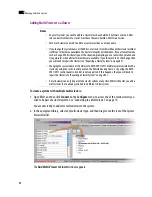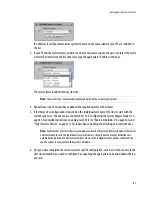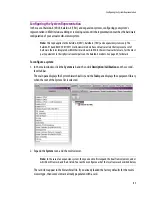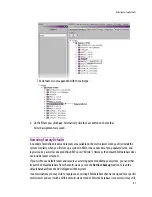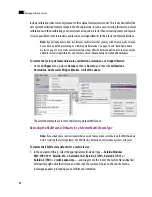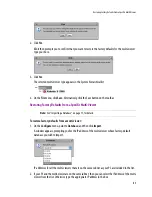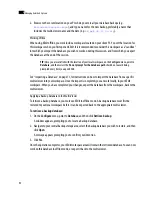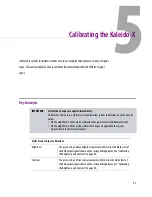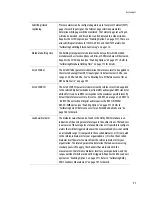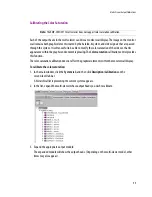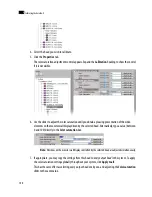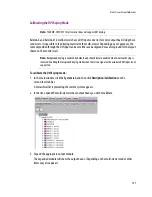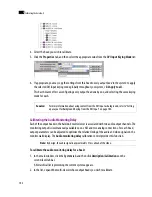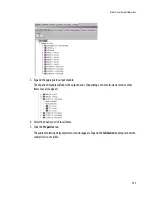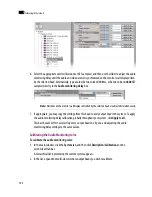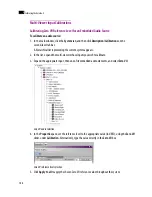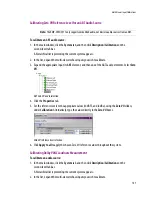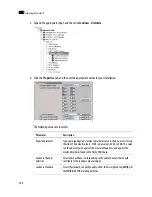
94
Calibrating the Kaleido-X
5
Color saturation
The color saturation of an RGB output signal can be adjusted so that colors in
the video windows will match the graphic elements introduced by the
Kaleido-X around them on the corresponding display. See “Calibrating the
Color Saturation” on page 99.
DVI keying mode
Depending on your purposes, key material provided through the DVI input
can be set either as a background or as a foreground for the layout shown on
the monitor wall. See “Calibrating the DVI Keying Mode” on page 101.
Audio monitoring delay
The audio monitoring delay parameter can be adjusted to optimize the
relative timing of the audio and video signals on the monitor wall display.
See “Calibrating the Audio Monitoring Delay” on page 102.
Audio monitoring color
Audio monitors can have an indicator that changes color depending on the
output display where audio monitoring of the associated audio level is taking
place. The default color is a shade of blue. See “Calibrating the Audio
Monitoring Color” on page 104.
Multi-Viewer Input Calibrations
Detail enhancer
The purpose of the detail enhancer parameter is to recover sharpness that
may have been lost in the de-interlacing and scaling process. See “Calibrating
Detail Enhancement and Dynamic Range” on page 111.
Dynamic range
The dynamic range parameter determines the color model to be applied:
either full-range RGB (0-255) or video RGB (16-235). Full-range RGB is also
called
computer RGB
; video RGB is also called
studio RGB
. See “Calibrating
Detail Enhancement and Dynamic Range” on page 111.
Aspect ratio
Unlike
HD
signals where aspect ratio information, when available, always
follows the SMPTE 2016 standard, there are different standards for encoding
aspect ratio information in
SD
signals. The AFD & WSS calibrations determine
which standard will be applied by default to SD signals feeding the selected
multi-viewer input. The aspect ratio of video windows on the monitor wall
can then be automatically adjusted, based on the current source assignment.
See “Calibrating Automatic Aspect Ratio Decoding” on page 110.
NTSC standard
The NTSC and NTSC-J standards are different with regard to their black level.
This parameter determines which standard is to be applied to the selected
analog input signal.
Summary of Contents for Kaleido-X
Page 1: ...Kaleido X User s Manual Part Number M770 2800 111 1 June 2011 ...
Page 8: ...viii toc ...
Page 33: ...Loading a Layout 25 Kaleido X16 ...
Page 34: ...26 Getting Started 2 Kaleido X 4RU ...
Page 152: ...144 Creating Logical Sources 7 ...
Page 178: ...170 Setting Up Rooms 8 ...
Page 244: ...236 Creating Layouts 9 ...
Page 253: ...Detailed Directions 245 3 Under Properties General type a Friendly name for the Action ...
Page 256: ...248 Creating Actions 10 ...
Page 272: ...264 Managing Kaleido RCP2 Users 11 ...
Page 348: ...340 Tally Interface Devices 13 ...
Page 350: ......
Page 352: ...344 Using the Serial to TCP IP Dispatcher 15 ...
Page 406: ...398 Index ...

